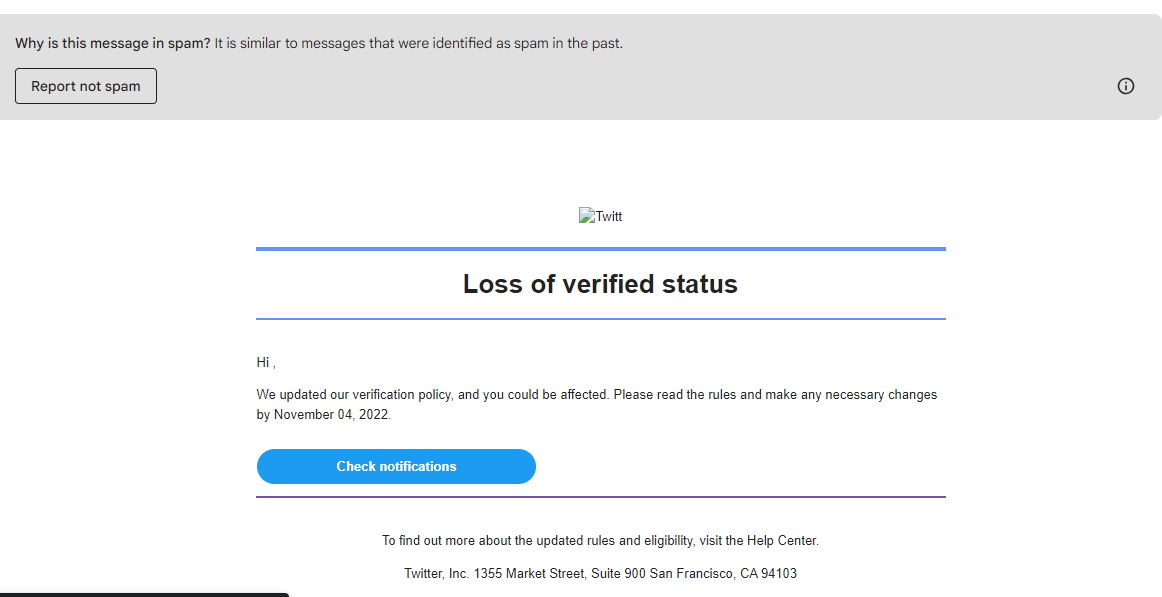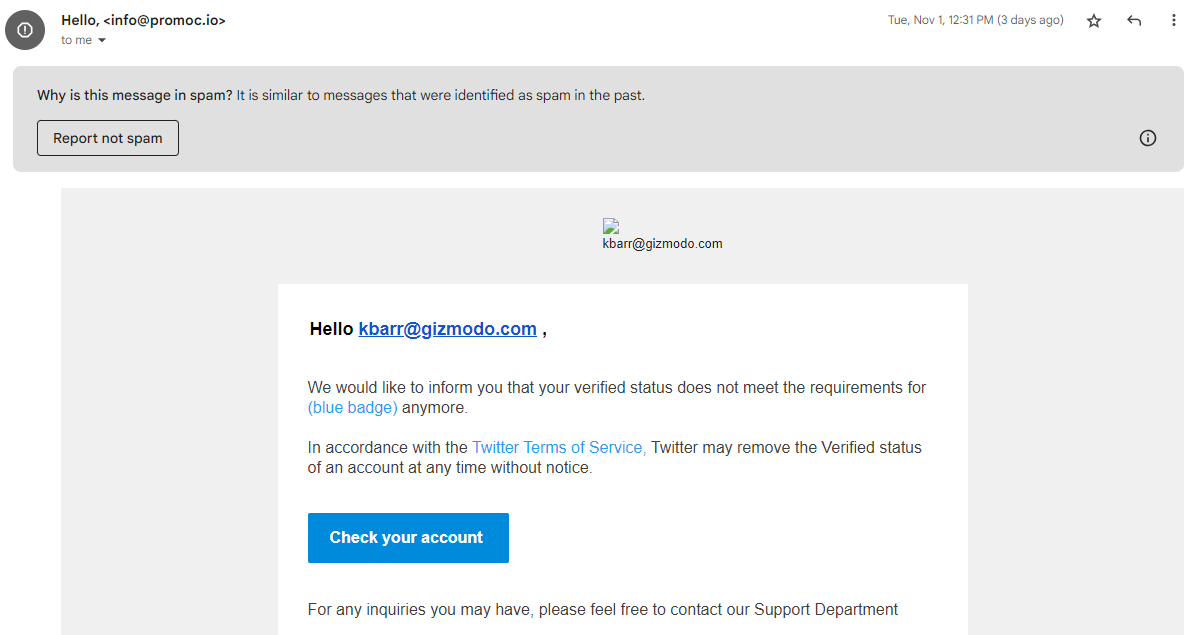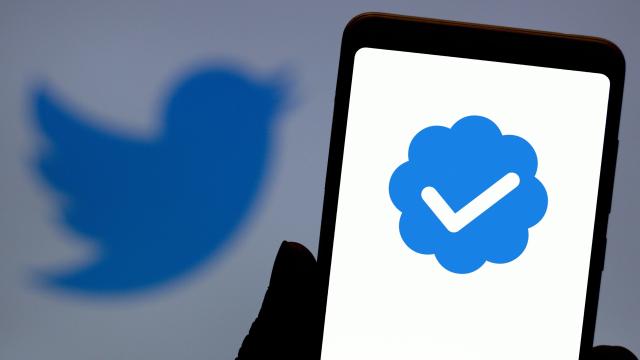There are approximately one million pieces of Twitter news circulating this week. If you’re a user of the site, it could be hard to keep tabs on what’s happening behind the scenes amid Elon Musk’s chaotic takeover.
One second, the company hints at 50% layoffs and the next, some of those same cut staff are suing. On Monday, Twitter’s newly installed CEO planned to start charging $US20 ($28) for verification and on Tuesday, it’s $US8 ($11), seemingly because of an online spat between the world’s richest man and horror author Stephen King.
Amid all the confusion, scammers are doing their best to take advantage. Many verified Twitter users’ email inboxes (including those of some Gizmodo staff) are being flooded phishing messages this week.


These messages, steeped in a false sense of urgency, are largely focused on getting the target to click a link, and enter login information on a phishing webpage created to look similar to Twitter’s interface. From there, some of the schemes even send along two-factor authentication codes via SMS, according to a report from Bleeping Computer.
When the rumoured going rate for Musk-era Twitter verification was $US20 ($28)/month, the scam emails touted a $US19.99 ($28) number, as shown in Tech Crunch and PC Mag reports from Monday. Now, with $US8 ($11) being the compromise, the scammers seem to have lowered their price, based on Bleeping Computer’s screenshots.
However, even though Twitter is likely to send out notifications in the near future regarding verified status payments, the company has not done so, as of writing. Repeat: At the moment, none of the emails asking you to make changes to your Twitter account, in order to keep your verified status are real.
Currently, there are only about 423,000 verified users on Twitter, according to a report from the New York Times. Some view the blue check mark as a status symbol, conveying internet clout on the platform. However, for journalists, politicians, governments, and celebrities verification has been a guard against would-be-impersonators since the feature’s launch in 2009.
On top of being annoying, Musk’s proposed monthly payment plan could pose threat to that valuable authentication system. Musk is reportedly gunning to start subscription blue checks beginning November 7 (one day before U.S. election day). And subscribers wouldn’t necessarily need to actually prove their identities to earn a “blue tick,” according to the same NYT report based on Twitter internal documents.
The Tesla CEO’s move to rapidly monetise his new social media platform is sort of understandable when you consider the $US13 ($18) billion in debt the company was forced to take on during his acquisition. In its entire 16-year history, Twitter has only been profitable a couple of times, in 2018 and 2019. But maybe Musk should’ve considered what he was getting into before he first started his Twitter takeover 7 months ago.
Even if every person currently verified on the platform opts to pay $US8 ($11) a month, that’s just $US40.6 ($56) million per year, barely scratching the surface of the $US1 ($1) billion that the company now has to pay off annually. And, at the moment, more people seem to be fleeing Twitter than expressing enthusiasm about signing up for a paid blue check mark. Earlier this month, an internal analysis by the site found it was haemorrhaging its most active users. Just the week since Musk’s purchase became official, nearly one million users have left the site, as first reported by MIT Technology Review.
Even advertisers are putting a temporary pause on their Twitter activity, further endangering the site’s already limited revenue streams. General Mills, General Motors, Pfizer and many other companies are stopping their ads on the platform until they see what Musk’s vision for content moderation looks like in action.
